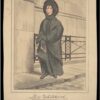
Rebecca Nesvet, “Miss Whitehead, ‘The Bank Nun’”
An urban legend maintains that early in the nineteenth century, one Miss Whitehead, colloquially known as “the Bank Nun,” frequently visited the Bank of England to accuse that institution of destroying her brother, a financial forger. This essay traces the evolution of this legend. I contend that in 1837, an obscure comic sketch reacted to that year’s major financial crisis by dredging up the Romantic-era case of financial forger Paul Whitehead and focusing on his surviving sister. Displacing her brother’s notoriety onto her, the sketch reinvents her as “the Bank Nun,” a grotesque magnet for lingering Romantic-era anxieties about the circulation of paper credit, financial forgery, and women. A succession of plagiarisms, retellings, and reappraisals of this ephemeral sketch and its portrait illustration made the Bank Nun a folk heroine of enduring resonance. Via this iconic figure, Romantic-era economic controversy haunts London today.

Roger Whitson, “The Difference Engine: 1832, 1855, 1876, 1991, 2002, 2008”
The difference engine is a case study in what media archaeologists see as a diversity of temporalities entangling the production and functionality of technological media. Only an unfinished prototype, what was called “Babbage’s beautiful fragment” existed of Babbage’s designs during his lifetime. Even so, many machinists created their own variations of the difference engine after Babbage’s death. This phenomenon, and the many troubles Babbage himself ran into regarding the materials used to create the difference engine, demonstrates that the machine’s functionality exceeded its inventor’s intentions and awareness.
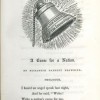
Denae Dyck and Marjorie Stone, “The ‘Sensation’ of Elizabeth Barrett Browning’s Poems before Congress (1860): Events, Politics, Reception”
Elizabeth Barrett Browning’s Poems before Congress paradoxically addresses a political event that never took place: a meeting of European powers to discuss the “Italian question” planned for January of 1860. Nevertheless, the collection addresses several momentous historical developments, including the Second Italian War of Independence in 1859, the intervention of Napoleon III of France in the Italian struggle, and the international conflict his intervention precipitated. Indeed, the book’s publication and the sensation it created in themselves constitute a plurality of events, since the collection appeared under differing titles in England and America and encountered differing responses in each country. Contrary to the still dominant critical view that the volume was almost universally denounced, its reception was shaped by diverse locations, shifting chronological contexts, and conflicting political affiliations. Close analysis of the reviews underscores the importance of these wider contexts, which influence what otherwise appear to be primarily literary or aesthetic judgements. At the same time, analysis of varying responses to not only “A Curse for a Nation” but also “Napoleon III in Italy” and other poems in the volume demonstrates a number of recurring points of contention. These include the collection’s title, the politics of interventions across national borders, English liberalism, the nature of democracy, cosmopolitanism versus nationalism, women writers in relation to politics, poetic form, and, most of all, EBB’s representation of Napoleon III—the issue that is front and centre in most of the 1860s reviews and that shaped, in turn, reactions to all the rest.
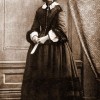
Lara Kriegel, “On the Death—and Life—of Florence Nightingale, August 1910”
This essay examines the death, and the life, of Florence Nightingale, the great nursing heroine of the Crimean War. An eminent Victorian, Nightingale passed away at the ripe old age of ninety in 1910, at a time when Britain was witnessing great internal strife and facing looming international tension. By that moment, the Crimean War was a thing of the distant past. Even so, Nightingale’s death served as a national tonic. It allowed mourners to rekindle the myths of Nightingale’s lifetime that had unified a ravaged nation in the wake of the Crimean War. Nightingale’s most important reforming efforts, which included nursing education, army improvement, and sanitary reform, both in Britain and in India, would postdate the Crimean War. However, the image of a young Nightingale ministering to the troops in the Crimea would remain the dominant one, not just in her life, but at her death as well. As it assesses the death and life of Nightingale, this essay focuses on two moments of celebrity and mythmaking in the long career of the heroine: the making of her legend in the Crimea and its resurrection at her death. It follows earlier literature, both generated during the nineteenth century and written by those who study it, establishing Nightingale as the avatar of Victorian womanhood. Accordingly, it seeks to understand Nightingale’s passing as a belated death knell to the Victorian age.
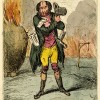
Carolyn Lesjak, “1750 to the Present: Acts of Enclosure and Their Afterlife”
Although certain events, such as the General Enclosure Act (1801) and the Swing Riots (1830), punctuate the history of enclosure in Britain, enclosure was in actuality a centuries-long process that involved thousands of Acts of enclosure, numerous forms of resistance from commoners and the newly industrial working class, and the destruction of an entire way of life subtended by common right. Given its long durée, enclosure challenges the idea of a discrete historical “event,” a challenge this entry attempts to take up, both in terms of considering how we look back to the past and forward into the future as members of a now fully global commons.

Lorraine Janzen Kooistra, “The Moxon Tennyson as Textual Event: 1857, Wood Engraving, and Visual Culture”
By convention the launch of the so-called “golden age” of wood-engraved illustration in Britain, also known as “the sixties,” is Edward Moxon’s publication, in May 1857, of Alfred Tennyson’s Poems, with 54 wood-engraved illustrations designed by 8 artists, including the Pre-Raphaelites John Everett Millais, William Holman Hunt, and Dante Gabriel Rossetti. Although the Moxon Tennyson was neither a commercial nor critical success on first publication, before the decade was out its Pre-Raphaelite designs were considered a touchstone for artistic illustration, a reputation that continues today. Without disputing the significance of this aesthetic achievement, I want to shift critical focus to the Moxon Tennyson’s status as mass-produced work of art in the age of mechanical reproduction. My interest here is in how its visual communication was expressed through its reproductive technology at the historical moment of its production and reception. This essay re-positions the Moxon Tennyson as a textual event by reading it in the context of documentary, satiric, and artistic wood-engraved images selected from the crucial six-month period after its publication. By situating the Pre-Raphaelite illustrations for Tennyson’s Poems in relation to representations in the public press of such disparate events as the Art Treasures of the United Kingdom Exhibition in Manchester, the reportage on Indian uprisings at Meerut and Cawnpore, the Matrimonial Causes Act, and the Christy Minstrels show in London, I aim to show the complex ways in which the Moxon Tennyson was a worldly event, caught up in, and contributing to, ways of seeing and knowing in 1857.
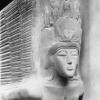
Ellen Crowell, “Oscar Wilde’s Tomb: Silence and the Aesthetics of Queer Memorial”
This entry looks at how, in the aftermath of Oscar Wilde’s death, those individuals closest to the writer sought a suitable funerary monument in memorial. I first explore the interpersonal and aesthetic politics that informed the choice of Jacob Epstein as the tomb’s commissioned sculptor, and how that choice must be understood as integral to how we remember Wilde today. Noting how profoundly the aesthetics of funerary sculpture are in dialogue with both literary and queer history, this essay also briefly imagines how an alternate monument adorning Wilde’s tomb might have differently configured that dialogue. By comparing Epstein’s tomb with the radically different aesthetics that guide a “rejected” design, this one by the writer’s close artistic collaborator and friend Charles Ricketts, this essay considers how aesthetics have shaped twentieth and twenty-first century approaches to queer memory, mourning, and modernity.
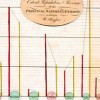
Jonathan Sachs, “1786/1801: William Playfair, Statistical Graphics, and the Meaning of an Event”
This entry considers William Playfair’s invention of statistical graphics, which turns dates into data and thus helps users to recognize new kinds of events. Because their arresting visual features are designed to save time for men of “rank or active business,” the graphs respond to an increasing sense of acceleration and information overload that we associate with emergent modernity. Despite being of their moment in this way, the graphs failed to catch on, and the explanation for this underscores this entry’s framing questions about changing understandings of date and event in the period covered by the BRANCH project.

Herbert F. Tucker, “In the Event of a Second Reform”
Between the 1867 passage of the Second Reform Bill and that of the Forster Education Bill in 1870, Britain undertook its modern metamorphosis into an effectively secular and democratic state, in a legislative process concurrently abetted and assessed by contemporary productions in literature. Thick description of this process illustrates by example this entry’s framing questions about the nature and the scale of an “event.”
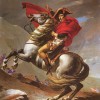
Mary Favret, “The Napoleonic Wars”
Trying to locate the Napoleonic Wars as an event, or a constellation of events in time and space, only reveals the historical dislocations produced by war on a global scale. Like many of the wars of the twentieth century, the Napoleonic wars illustrate how warfare, seemingly the most conventional object of history, defies history’s most conventional questions: when, where, who? Yet these particular wars also pose distinctive difficulties to our efforts to pin them down. This essay examines how the Napoleonic wars, in their scale, their repetitions and infiltration of cultural forms, keep history – and the historical event – an open, persistent question.
